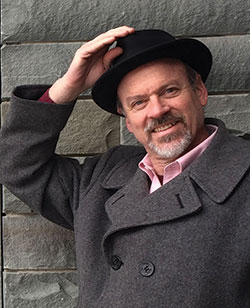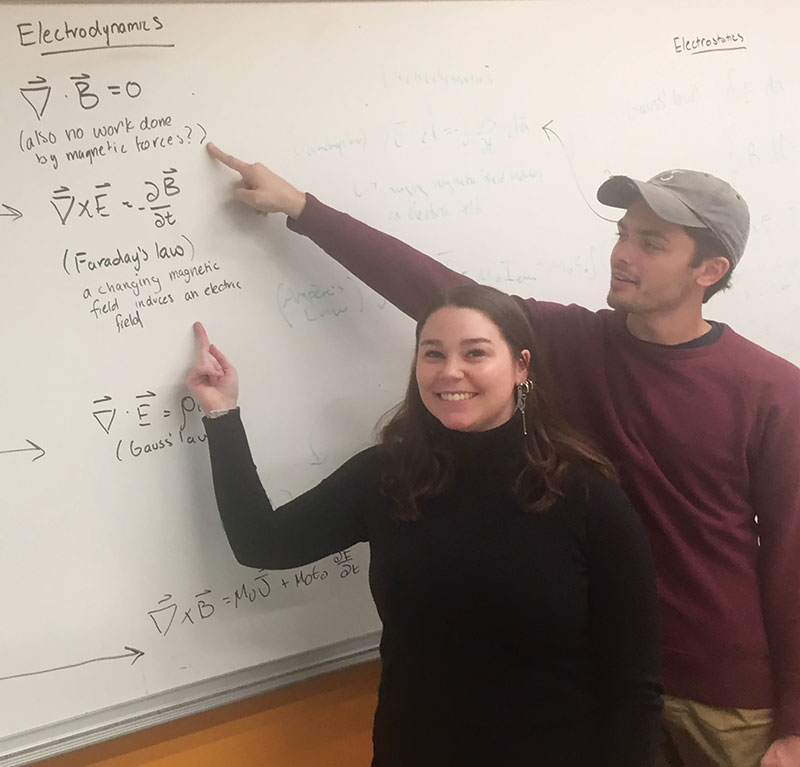Sigma Pi Sigma: 100 Years of Connections
Fall
2021
Letters and Feedback
Sigma Pi Sigma: 100 Years of Connections
Gary White, SPS Adviser, The George Washington University and Emeritus Director, SPS and ΣПΣ
 Greetings! One hundred years of ΣПΣ—of honor, encouragement, service, and fellowship! I have been remotely aware of things such as a physics honor society for only about half that long, but I am so grateful that an institution devoted to helping undergraduate students and departments has thrived since its earliest days. I am sure that my own path through physics, and those of many of my favorite people, would have been much less interesting, and likely, less physics-y, were it not for the successes and the breadth of opportunities that ΣПΣ spawned. As you probably know, the Society of Physics Students (SPS) was essentially borne out of ΣПΣ* in 1968. I like to say that SPS and Sigma Pi Sigma are “linked, but distinct,” and both of them have been instrumental for me for decades. I would venture to say that most physicists alive today have been significantly touched by these organizations in a positive way, even if they don’t know it. The two societies exist to support those with an interest in physics and astronomy and make the community a better place.
Greetings! One hundred years of ΣПΣ—of honor, encouragement, service, and fellowship! I have been remotely aware of things such as a physics honor society for only about half that long, but I am so grateful that an institution devoted to helping undergraduate students and departments has thrived since its earliest days. I am sure that my own path through physics, and those of many of my favorite people, would have been much less interesting, and likely, less physics-y, were it not for the successes and the breadth of opportunities that ΣПΣ spawned. As you probably know, the Society of Physics Students (SPS) was essentially borne out of ΣПΣ* in 1968. I like to say that SPS and Sigma Pi Sigma are “linked, but distinct,” and both of them have been instrumental for me for decades. I would venture to say that most physicists alive today have been significantly touched by these organizations in a positive way, even if they don’t know it. The two societies exist to support those with an interest in physics and astronomy and make the community a better place.
My first connection to Sigma Pi Sigma was through Cecil Shugart, the first director of the Society of Physics Students, appointed in 1968, and the president of Sigma Pi Sigma from 1972 to 1976. I met him around 1974, I believe, as a middle school student participating in a summer science program (Astronomy!, Electronics!, Atoms!) when he was chair of the physics department at Northeast Louisiana University, now the University of Louisiana at Monroe. I could not have imagined that I would eventually take on that same director role some 27 years later. His sphere of influence (SOI) was large, and even from the margins and at that very young age I could see how much I benefited from his leadership and the strong sense of community he helped to establish.
Speaking of spheres of influence, I invite you to consider for a few minutes your own SOI, not in a self-aggrandizing way, but rather as a fun exercise in visualizing how we impact so many others. Imagine a personal and literal sphere that encloses you, with a radius of a meter or so, which is also the correct size for social distancing! I envision a Gaussian surface like we talk about in my Griffiths E&M class, since I am teaching about that later today.
Now, consider how your personal “sphere” evolves over time. Envision how even as you sleep your personal sphere sweeps out the shape of a curved tube because of Earth’s rotation; if you stay in bed all day on a rotating Earth whose center is fixed, your SOI can be represented by a thin torus—a doughnut of influence, in fact—encircling the whole Earth!
But wait—Earth’s center is not fixed! It has revolved to a new position while you were sleeping, which suggests that the ends of your doughnut will not actually connect and a sort of helical tunnel structure might better represent your personal SOI. Your own helical tunnel of influence (HTOI) will be flanked by many other helical tunnels representing all the other people in your life—numerous HTOIs, like so many fibers in a twisted coil of flat cable.
Now imagine how these HTOIs change as each person gets up and starts their day, heading to class, getting in a morning run, commuting to work. They begin to weave in and around each other, crossing and separating, intersecting, providing myriad chances to influence each other. Each day produces more twists and interactions among the fibers; what started out as a bit of simple spherical-cow imagery has become an unimaginably connected set of tunnels of opportunity, a weaving together of influences of impossible complexity. And this picture doesn’t even consider virtual connections, idea sharing through papers and articles, or higher-order influence effects!
Finally, imagine the 100 years since ΣПΣ began, in which this bundle of interlocking fibers curves onward in a hundred larger spirals, toward some future that I hope is improved because of the physicists’ presence within—because of your influence within!
I hope that you will consider your own HTOI within this bundle and use your influence to help make physics, and the world, a place that is more welcoming, more inviting, and more friendly to all, certainly more so than it has been in the past. What better way is there to realize the four dimensions of ΣПΣ: honor, encouragement, service, and fellowship?

*See the fascinating story of the creation of SPS in D. E. Cunningham, L. W. Seagondollar, C. G. Shugart, A. A. Strassenburg, and M. W. White, “The New Organization of Physics Students,” Phys. Today 21, no. 9, 59 (1968), doi: 10.1063/1.3035154.
